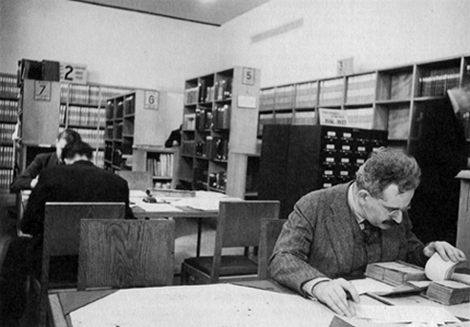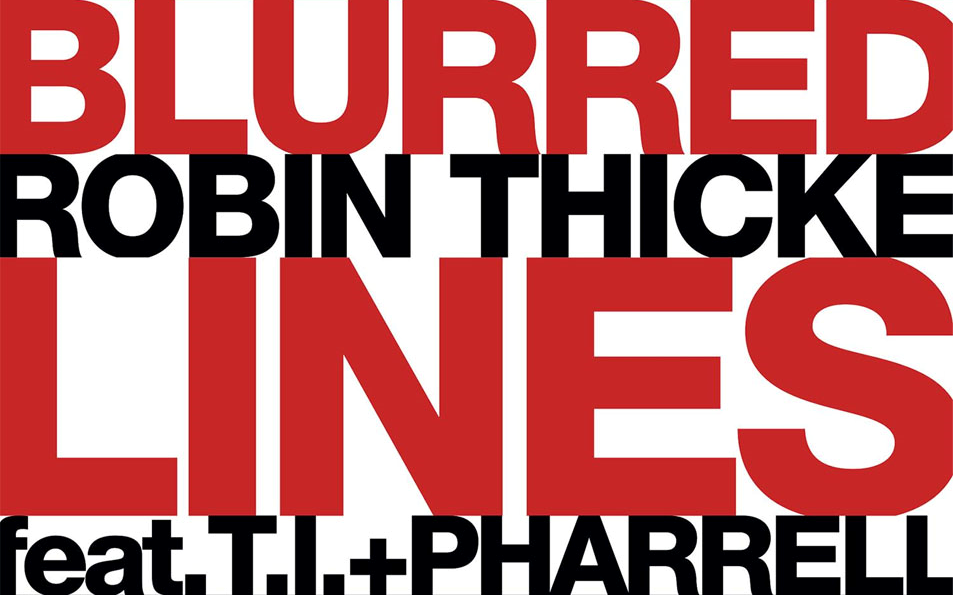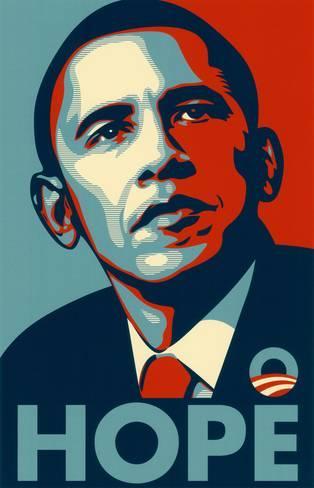Copyright protection is enshrined in Article 1, Section 8 of the U.S. Constitution. Some say it hasn’t evolved much since those times. In our digital age, there are many examples of material that has been used in copy-ready digital formats without the express permission of the creator, publisher, or owner who possesses copyright protection over the material. Let’s look at four examples where these issues arise.
◊
In our digital age, information travels as fast as our wi-fi connections will allow. From creator to user, from author to reader, our data reach intended audiences in hardly a heartbeat. But they also reach other people who will use them in ways not intended – or authorized – by their originators.
Only the legal threat of copyright protection can enforce the “originality” of a work of art. But “originality” can be a contested term. It’s hard to predict where we’re headed, but intellectual property protections in the digital age are being litigated like never before, as the multi-national lawsuit featured in the documentary film Google and the World Brain amply demonstrates.

Walter Benjamin in a library (Credit: Helvetiafocca, via Wikimedia Commons)
In his 1936 essay “The Work of Art in the Age of Mechanical Reproduction,” philosopher Walter Benjamin discussed how the “value” and uniqueness of the work of art changed when copies could be made easily with the printing press and the camera. Now, as we’ll see below, reproductions of digital work – which are indistinguishable from one another, and from the original – have complicated these issues immeasurably.
Case 1: Can a Joke Be Protected by Copyright?
Jokes make the world go ’round, don’t they? A good belly laugh makes us see things in a new light, and even the most mundane subjects – a banana peel, the President’s latest tweet – gather a little bit of comedy magic around them when used as the premise for a good joke. Moreover, with the speed of the Internet and apps like Twitter and Facebook to spread humor, jokes now fly through the air with the greatest of ease.
Professional as well as amateur joke writers now use digital platforms to get their wit and whimsy out to followers and other interested parties. But, per copyright law, even an utterance placed on an open-access platform such as Blogspot or Twitter has built-in protections against unauthorized reuse on that or any other public platform (not including the Share button, of course). This very much includes late-night comedy shows.
That’s the situation in which joke writer Alex Kaseberg believed he found himself when watching Conan one night in 2015. Kaseberg maintains a humor blog that he populates with amusing anecdotes and punchy jabs based primarily on current events – pretty much placing himself in the same position as the scores of comic writers working at shows that offer a humorous monologue every weeknight.

Conan O'Brien at 2016 San Diego Comic Con International (Credit: Gage Skidmore, via Wikimedia Commons)
One day, commenting on a news piece and the chilly February weather, Kaseberg published this bit of topical humor:
“It turns out the Washington Monument is ten inches shorter than previously thought. You know it has been a cold winter when even a monument has shrinkage.”
Kind of a groaner, right? Well, we’re not talking about quality here, just originality. So put this joke up against one Kaseberg heard on Conan soon after:
“Yesterday surveyors announced that the Washington Monument is ten inches shorter than what’s been previously recorded. Yeah. Of course, the monument is blaming the shrinkage on the cold weather. Penis joke.”
Kaseberg failed to see the humor in another comedian apparently stealing his joke. So, he set about identifying several of his jokes that he believed were “borrowed” and repurposed for O’Brien’s show. Then he filed a lawsuit that accused the show of using the jokes without compensation or acknowledgement.
How is it that Conan O’Brien gets sued for telling a joke, but this article can quote both versions of the joke with impunity? Because, as the writer, I’m protected by the legal concept of fair use. This allows me to quote salient material in a discussion of the topic without having to compensate the joke’s author(s).
Conan O’Brien and representatives of his show have consistently denied all of Kaseberg’s allegations and stated that the jokes’ similarities simply show a common, similar source in the daily news. I call this the “great minds think alike” defense.
Alex Kaseberg’s lawsuit – which, with modifications, is still pending – shows how digital technology has affected writers and their craft. With instantaneous publishing and transmission, writing is floating out in the world, available to inspire and influence others – and, theoretically, get picked up and reused without attribution. Writers need to be ever-vigilant against unauthorized use, and technology users have a duty to be scrupulous in acknowledging sources of inspiration and how they use those sources.
Case 2: The Fine-Art Portrait Created by Artificial Intelligence (AI)
It was big news when it happened: “AI Art at Christie’s Sells for $432,500,” blared The New York Times. The story went on to explain that a group of computer students working in France combined a computer algorithm called a GAN (a “generative adversarial network”) with a cram course on Western art to create examples of “imaginative” artworks.
The results of the students’ efforts, to be honest, are less portrait paintings than computer approximations of portrait-painting techniques. But, in this case, the computer printout “generated” by three students working with computer code was accepted for representation by Christie’s, the prestigious art auction house. And, amazingly enough, the work found a buyer willing to part with more than US $400,000 for the privilege of possessing it. (Pre-auction estimates were in the range of $7,000 to $10,000.)
You may have formed an opinion about these students, who call themselves “Obvious.” Would it affect your opinion if you knew that they had “borrowed” the code they employed to make the artwork? Does that make the work more or less original in your perception? Or is originality becoming one of those musty old terms that’s not particularly useful in evaluating art anymore – sort of like verisimilitude?
Well, maybe we should ask these questions of the originator of the AI code that Obvious used to make a cool 400,000+ bucks. He is a young computer researcher named Robbie Barrat, and he has an interesting story to tell.
Robbie Barrat is employed as a researcher at Stanford University. His latest interest, according to his social media accounts, is using the code he created to develop painterly female nudes. (Hey, he’s 19!)
Barrat devised the code that prompts a computer to develop “creative” responses to user-generated queries. This means the computer “chooses” among various potential visual responses and picks a few it “thinks” are best, based on its storehouse of examples of Western art. Then the programmer directs the computer to edit and refine details of the new work until the programmer is happy with the results. Barrat, the developer, shared the code online for others to adapt and use for their own purposes.
Some of the copyright questions that come to mind in this case are, well, rather obvious: Did Barrat relinquish all intellectual property rights when he published his code as a jumping-off point for the use of others with similar interests? Does Obvious owe Barratt a royalty on the AI painting that reaped such an unexpectedly handsome price at auction? Or is the code Barrat created more analogous to the oil paints that Van Gogh used to paint his masterpieces? (Obvious claims to have taken Barrat’s code and “tweaked” it for their purposes, sort of like an artist mixing paints to get the right shades.)
This would be an interesting case for a court of law to adjudicate, but it appears unlikely it will end up there. You see, Barrat is not a particularly litigious person to start with. He says he has no quarrel with others using his code, but he was surprised to see the way Obvious used it. He just wishes Christie’s had chosen its first AI artwork more judiciously. “I’m more concerned about the fact that actual artists using AI are being deprived of the spotlight,” he said.
Still, the subject is bound to be with us for a long time, as publicly shared code used to create objects is just in its infancy, and its acceptance was given a rapid boost by the Christie’s sale.
Case 3: “Blurred Lines” and a Copyright for “Feel”
Remember the summer of 2013? If you were listening to the radio or streaming music videos back then, you most likely couldn’t avoid picking up musical vibes from Robin Thicke and Pharrell Williams’s ubiquitous hit “Blurred Lines.” The song and its sensuous, slinky rhythm permeated the air that season. And the suggestive “unrated version” of the video has generated more than 550 million views.

(Public Domain, via Wikimedia Commons)
Among the multitudes listening to “Blurred Lines” that summer were heirs of the estate of Marvin Gaye and, for them, something rang a bell – in this case, a cowbell – that made them think of Gaye’s 1977 soul-funk party jam, “Got to Give It Up.” Although many aspects of the songs were distinctly different (including lyrics, melody, harmony, rhythm and tempo), there were also elements that seemed uncannily similar. For example, the “groove” or “feel” of “Blurred Lines” was reminiscent of “Got to Give It Up,” as were the instrumentation (a cowbell is a signature feature of both tracks) and “texture” of the songs. And both sound as though they were recorded at a funky but intimate house party.
So, the Marvin Gaye estate did what any self-respecting American entity would do in such a circumstance: They sued everyone in sight, including not only Thicke and Williams but also rapper T.I., who contributed a short but pivotal verse to the production. But could a copyright suit successfully claim protection for similarities that were not on the printed (i.e., copyrighted) score of the original song?
When the verdict came down, the Gaye estate – as well as most everyone else – were surprised to learn they had prevailed. Even music pros such as producer Niles Rodgers, who has collaborated with Williams, professed shock at the outcome. Despite the disbelief the decision generated, in March 2018 it was reaffirmed, and Gaye’s heirs won again on appeal (after removing rapper T.I. from the suit).
Perhaps the most infamous music copyright lawsuit in recent memory was the 1971 suit filed against former Beatle George Harrison over his song “My Sweet Lord.” A court found that his composition was uncomfortably close in its melody to the 1961 song “He’s So Fine,” recorded by American girl-group the Chiffons. (Harrison later settled the score by purchasing the rights to that song.)
Some intellectual property rights experts were taken aback by both decisions for the Gaye estate. A Forbes magazine article notes that the decision on the appeal was not unanimous, and the dissenting judge commented,
“The majority allows the Gayes to accomplish what no one has before: copyright a musical style. ‘Blurred Lines’ and ‘Got to Give It Up’ are not objectively similar.”
In December 2018 a federal judge ruled on the appeal from the two “Blurred Lines” songwriters and decided in favor of the Marvin Gaye estate. Billboard magazine reported, “This ends the saga of the much-watched lawsuit.”
Case 4: “Hope” Gets Its Day in Court
In 2008, artist Shepard Fairey was already well-known in some quarters. His Andre the Giant “OBEY” stickers and posters graced lamp-posts and mailboxes in many urban areas across the U.S. and elsewhere. But his fame increased dramatically that year when he produced a poster that featured a two-toned, red-and-blue, slightly abstracted image of Democratic presidential candidate Barack Obama with the huge legend “HOPE” emblazoned across the bottom. Fairey created the poster on his own, not as a commission by Obama’s supporters, and eventually donated the work to the campaign as a “hopeful” gesture of goodwill.

The image has been imprinted on our collective memories of that moment in presidential campaign history, and a hand-finished version of the original, full-sized poster is now in the collection of the Smithsonian Institution. But did you know that Fairey’s artwork is controversial from an intellectual property standpoint? The copyright holders of the photograph he used for the poster—the Associated Press (AP), for which the photographer freelanced – sued Fairey for unauthorized use of the original photo.
Digital transmission of imagery made Fairey’s obtaining the photo and subsequent use quite easy. Once it was established that a particular AP photographic image was used for the “HOPE” poster, Fairey had a ready counter-argument: Not only did his adaptation of the photo not violate copyright protections, he asserted, it was actually protected from copyright liability by the doctrine of fair use.
Fair use refers to the practice of “reusing” copyrighted material in a cultural context, such as commentary or criticism; this contextual purpose generally protects the user of such materials against copyright claims from the creator or rights holder.
Fairey’s argument is an interesting legal proposition, and it would have been fascinating for it to have been adjudicated in court. Instead, several years after the lawsuit against Fairey was filed, the parties announced a settlement that included sharing profits from the poster and the possibility of Fairey producing additional artworks using the AP photographic archive.
Media is Changing: Can Copyright Law Keep Up?
All of the cases we’ve looked at are connected by new media, whether as subject or delivery system. And some cases are more slippery than others. Copyright protection is a Constitutional right in the U.S., but it seems that author privileges, especially in new-media environments, are increasingly complicated.
The concerns raised by Benjamin’s “Mechanical Reproduction” essay apply in our digital age equally as in earlier periods, if not more so. Perhaps a 21st century revision of copyright protection is called for, an updating that acknowledges the rights of authors in the face of new-media intrusions.
Whatever the trends in intellectual property rights, creators must guard their copyrights with vigilance, for their work can now be copied and even manipulated instantaneously. Copyright law will protect these creations if it’s enforced fairly, and if laws and legal interpretations stay as current as media innovators do.
Ω
Kevin Martin is Senior Writer for MagellanTV. He writes on a wide variety of topics, including outer space, the fine arts, and modern history. He has had a long career as a journalist and communications specialist with both nonprofit and for-profit organizations. He resides in Glendale, California.
Title image: Stacked books background. (Credit: adistock, via Adobe Stock)

